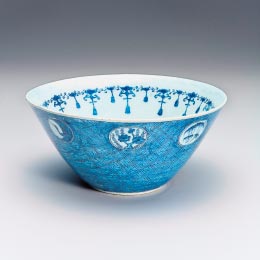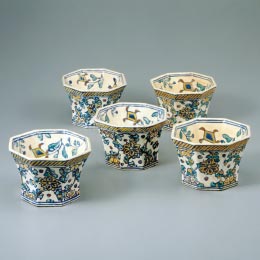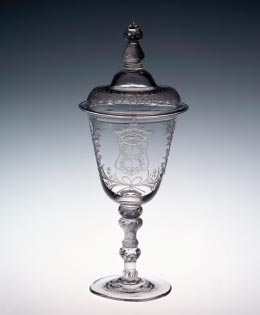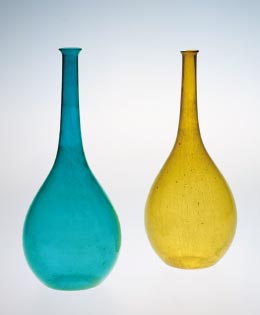

MIHO MUSEUM
(Exhibited for the entire duration of the exhibition)
(Exhibited for the entire duration of the exhibition)
While aspiring for
porcelain, Delftware potters could not escape its image either.
Perhaps this Dutch ceramic ware was better suited for the aesthetic
sensibility of the Japanese. The examples that were imported to
Japan in the Edo period have been carefully preserved to this day.

Idemitsu Museum of Arts
(Exhibited for the entire duration of the exhibition)
(Exhibited for the entire duration of the exhibition)
The oranda utsushi
(literally, “Dutch copy”), or Dutch-style ceramics, that the potter
Ogata Kenzan (1663–1743) produced after several attempts at his
Narutaki workshop surpasses mere imitation. Kenzan’s creations
possess a high degree of originality and perfection.

Kobe City Museum
(Exhibited for the entire duration of the exhibition)
(Exhibited for the entire duration of the exhibition)
Known as bokaal in
Dutch and pokal in German, this wine glass comes with a lid. In the
Edo period, the Japanese prized European glass as rare gifts.


Kobe City Museum (Biidoro
Archives Collection)
(Exhibited for the entire duration of the exhibition)
(Exhibited for the entire duration of the exhibition)
Such long
neck sake decanters (tokkuri) were purportedly made in the 1670s in
Nagasaki. Their manufacturing method had circulated to Osaka by the
early eighteenth century at the latest, and eventually these vessels
were made in Edo (now Tokyo). While imitating European glass, the
technique and sensibility of the time that led to the creation of
these glass decanters befitting Japanese aesthetics surprise us.